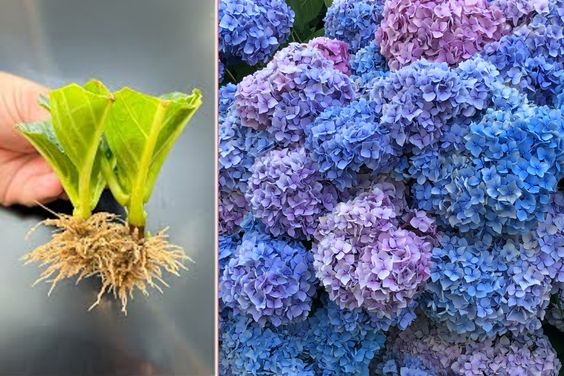Pinky Winky Hydrangea is a beautiful flowering shrub that offers two-toned white-pink flowers in mid to late summer.
The Pinky Winky Hydrangea shows off branching stems filled with many flower buds that can open in a white-pink hue and grow up to 16 inches long over lime-green leaves. You can use it as an ornamental tree, grow in pots, or use it as an accent plant. Read more about this flowering shrub in this post.
USDA Zones: 3-8
Pinky Winky Hydrangea Information

Pinky Winky Hydrangea (Hydrangea paniculata ‘Pinky Winky’) is a large paniculata variety popular for its impressive panicle flower heads that bloom on sturdy, elongated stems. Initially, the flowers are white that gradually change to lovely pastel hues and rich pinks. It is favored by home gardeners, Pinky Winky thrives in both formal and casual garden settings.
It requires a bit more specific seasonal care. When established, it grows fast, and in favorable growing conditions, the plant can reach up to three feet per season.
This cultivar is often used in flower arrangements and bouquets. You can also grow them in pollinator gardens, as the flowers attract bees and butterflies.
Where to Grow Pinky Winky Hydrangeas
Pinky winky grows fast and can grown together for creating a border, privacy screen, or in pots. Once established full grown plants attain a good height and become a focal point in the landscape. You can also add them to hedges or prune the pinky winky hydrangea in a tree-like shape,
Propagating Pinky Winky Hydrangeas
The ideal time to propagate this cultivar is during spring or fall. When planting in spring, do it after the frost. Fall propagation has to be done earlier so that roots are established before winter comes.
You can grow ‘Pinky Winky’ hydrangea from cuttings, and this article will help you with this task.
Ideal Growing Conditions for Pinky Winky Hydrangeas
Light
Grow hydrangeas in well-drained flower beds that get 8-10 hours of sunlight daily. In warm areas, they favor afternoon shade to prevent wilting.
Soil
Ensure the soil is fertile and well-draining. Adding compost can greatly improve clay-based soil. This hydrangea thrives in both alkaline and acidic environments, provided they are not too extreme. Apply a sprinkling of fish blood and bone at planting time and again each spring.
Water
New plants must be watered frequently across the season until they are established. In this period, extra watering has to be provided twice or thrice a week. When established, you can reduce the watering frequency. however, it depends on the climate, too.
If you are growing this plant in warm regions, then use drip irrigation or soaker hoses to avoid wilting.
Fertilizer
Apply a slow-release fertilizer while planting and during spring. Avoid feeding the plant in late winter.
Pruning
Hydrangea paniculata Pinky Winky flowers on new growth. Therefore, most gardeners choose to prune in late winter or early spring. Pruning during this time encourages new growth in practice for the growing season.
You can also trim the plant before active growth for the desired size and shape of the plant and discard the dead or damaged stems.
Pests and Diseases
Although Pinky Winky panicle hydrangeas are commonly disease-free, some common issues may arise that need a lookout. Foliar diseases such as leaf spot, blight, and mildew are the most often seen. The common symptoms are yellowing leaves, tan-brown lesions, and premature leaf drop. While these diseases rarely cause complete failure of the plants, they can adversely affect the overall appearance.
This variety rarely faces serious issues with pests, though periodic treatments for aphids may need attention.



